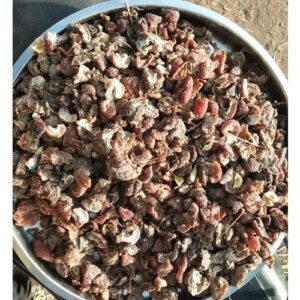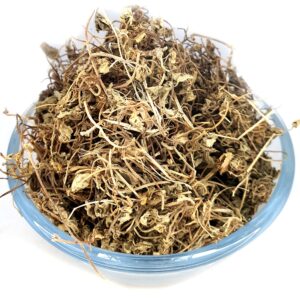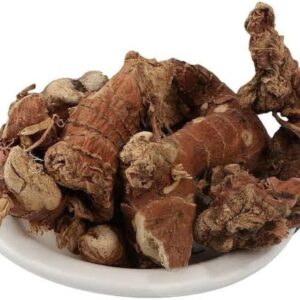Description
Common Names:
- Sarpagandha
- Indian Snakeroot
- Serpentina
- Rauwolfia
Botanical Classification:
- Family: Apocynaceae
- Genus: Rauvolfia
- Species: R. serpentina
Description: Sarpagandha is a perennial herb native to the Indian subcontinent and Southeast Asia. It is known for its long, tuberous roots and shiny green leaves. The plant produces small, fragrant white flowers and is traditionally used in Ayurvedic medicine.
Forms:
- Dried Root: Used in traditional medicine and herbal formulations.
- Sarpagandha Powder: Ground form of the dried root, used in supplements and herbal preparations.
- Sarpagandha Extract: Concentrated form used in health supplements and tinctures.
- Sarpagandha Capsules/Tablets: Encapsulated powdered form for convenient consumption.
Nutritional and Phytochemical Benefits:
- Contains Alkaloids: Includes reserpine and other alkaloids with pharmacological activity.
- Rich in Essential Compounds: Contains compounds that have been studied for their effects on the nervous system and cardiovascular health.
Health Benefits:
- Supports Mental Health: Known for its use in treating anxiety and hypertension. Reserpine, an alkaloid in the plant, has sedative and anti-hypertensive properties.
- Anti-hypertensive: Traditionally used to manage high blood pressure by reducing sympathetic nervous system activity.
- Sedative Effects: Can help with insomnia and stress-related disorders by promoting relaxation.
- Antipsychotic Properties: Historically used in the treatment of psychotic disorders due to its calming effects on the nervous system.
- General Tonic: Supports overall wellness and balance of the body’s systems.
Traditional Uses:
- In Ayurveda: Sarpagandha is used to balance the body’s doshas, particularly to calm the nervous system and manage conditions like hypertension and anxiety.
- In Traditional Medicine: Utilized in various cultures for its effects on mental health and cardiovascular function.







